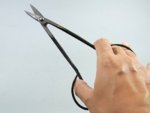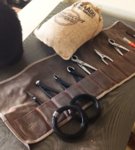Johnathan
Omono
I bought a pair of Kaneshin spherical concave cutters (right tool in your photo) a few years ago and it has become a go-to cutter for me. For 20 years, I used mainly knob cutters and concave cutters, but have found the spherical concave cutter gives the access of a concave cutter, but the bite of a knob cutter. As mentioned though, the 8” cutters are really designed to cut branches less than 1/2” in diameter. Much larger, and a small saw is a cleaner way to go.
So my question now is, would the 20 years using the knob cutters and concave cutters separately been easier by using the rounded edge tool? Or, does the 20 years of using those tools separately and understanding why, and how they are used make the learning curve on the rounded edge cutters easier?
If it was your first tool ever,would you choose the hybrid or two separate?


